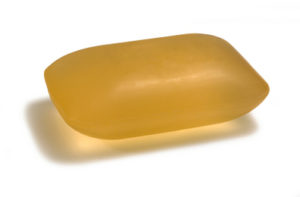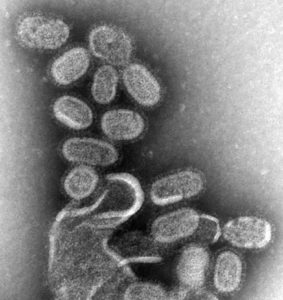 What is the best way for cleaning hands to prevent the spread of flu viruses? Advertisers would have you believe that only their hand sanitizers can do the job, but... guess what? That's not true! Hand washing with soap and water is the best. One study found that even skipping the soap and just rubbing the hands with plain water for 30 seconds is better than most hand sanitizers!
What is the best way for cleaning hands to prevent the spread of flu viruses? Advertisers would have you believe that only their hand sanitizers can do the job, but... guess what? That's not true! Hand washing with soap and water is the best. One study found that even skipping the soap and just rubbing the hands with plain water for 30 seconds is better than most hand sanitizers!
A classroom study illustrated nicely how handwashing with soap and water is better than hand sanitizers or doing nothing (dirty hands) in spreading germs. The photos show it wonderfully.
From Medscape: Plain Water Better Than Hand Sanitizer for Influenza A
Simple handwashing — even without soap — is more effective than many hand disinfectants for killing influenza A virus (IAV) in typical clinical situations, new data show.
The researchers say the key factor that determines the effectiveness of ethanol-based disinfectants (EBDs) is whether there is wet mucus surrounding the virus. Wet mucus prevents the disinfectant from reaching the virus, which means the virus remained active after 120 seconds of EBD exposure.
By contrast, washing hands under plain water for 30 seconds inactivated the virus, regardless of whether it was initially surrounded by wet or dry mucus.
"The physical properties of mucus protect the virus from inactivation," lead researcher Ryohei Hirose, PhD, MD, a physician and molecular gastroenterologist at Kyoto Prefectural University of Medicine in Japan, said in a news release. "Until the mucus has completely dried, infectious IAV can remain on the hands and fingers, even after appropriate antiseptic hand rubbing."
Hirose and colleagues published their findings online September 18 in mSphere.
For the study, they first looked at the physical properties of mucus and found that ethanol travels more slowly through the thick, sticky substance than it does through saline, which has similar properties as plain water.
Next, the researchers attempted to simulate clinical situations in which healthcare professionals might transmit the virus: they collected sputum for IAV-infected patients and applied it to human fingers. After being exposed to an EBD [ethanol based disinfectant] for 2 minutes, the IAV [influenza A virus] was still active in the mucus on participants' fingertips. The virus was deactivated by 4 minutes.
If, however, the researchers allowed the mucus to fully dry on participants' hands before they used EBD, the hand sanitizer quickly inactivated the virus.
The Centers for Disease Control and Prevention and the World Health Organization recommend using disinfectants such as EBDs for 15 to 30 seconds. "However, our results suggest that this disinfection time is insufficient for the disinfection of infectious mucus of IAV-infected patients adhered to the fingers/hands and that current contact infection prevention and [antiseptic hand rubbing] regimens using EBDs are not sufficient to prevent IAV outbreaks," the researchers write.
The findings challenge those of previous studies, most of which have tested EBDs on dry mucus.
Given their results, the authors recommend actually washing hands and not simply rubbing them with hand disinfectant.

Influenza virus, magnified about 100,000 times. Credit: Wikipedia
